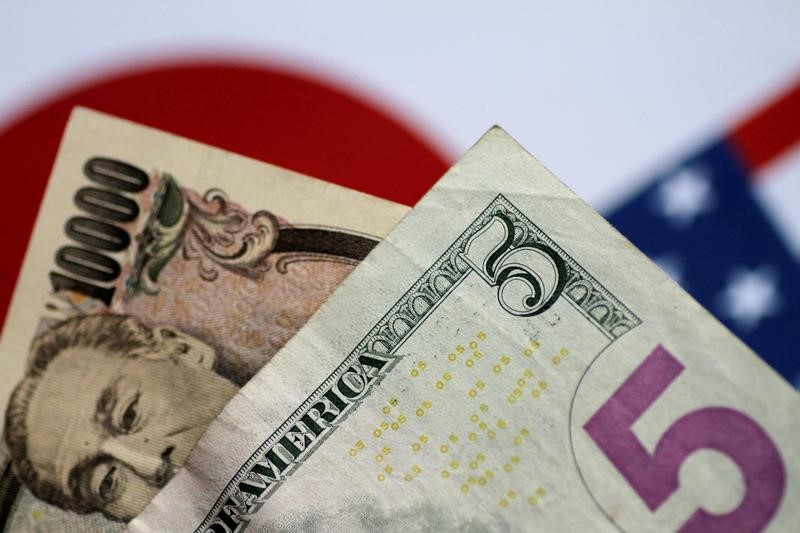Fubotv earnings beat by $0.10, revenue topped estimates
Investing.com-- Most Asian currencies kept to a tight range on Thursday as markets digested the Federal Reserve’s outlook of sticky inflation and slowing growth, although the dollar retreated as the central bank still projected more rate cuts this year.
The Japanese yen was among the better performers for the day, moving back towards its strongest levels in five months on sustained safe-haven demand, and as focus remained on more tightening by the Bank of Japan.
But Japanese markets were closed for a holiday, keeping broader Asian trading volumes muted. The USD/JPY pair fell 0.2%.
The Chinese yuan’s USD/CNY pair rose slightly after the People’s Bank of China kept its benchmark loan prime rate unchanged at record lows. Focus remained on more stimulus measures from Beijing.
The South Korean won’s USD/KRW pair fell 0.1%, while the Singapore dollar’s USD/SGD pair was flat.
The Indian rupee’s USD/INR pair fell 0.1%, pulling back further from record highs of 88 rupees hit earlier this year.
Dollar weak after Fed holds rates, cuts growth outlook
The dollar index and dollar index futures fell slightly in Asian trade, extending overnight declines after the Fed kept interest rates unchanged, as widely expected.
But the central bank maintained its forecast of at least 50 basis points of rate cuts this year, even as it forecast higher inflation and cut its growth outlook for 2025.
Chair Jerome Powell flagged continued uncertainty over the economy and the impact of President Donald Trump’s trade tariffs. But markets were somewhat relieved by the Fed making no drastic changes, despite growing fears of sticky inflation and slowing growth.
Still, the prospect of lower interest rates weighed on the dollar. The greenback was already nursing a tumble to five-month lows, as investors fretted over the impact of Trump’s fiscal and trade policies.
Australian dollar falls as weak labor data fuels rate cut bets
The Australian dollar lagged its Asian peers, with the AUD/USD pair falling 0.2%.
Labor data for February showed an unexpected contraction, drumming up expectations of more interest rate cuts by the Reserve Bank of Australia.
The central bank cut rates in February and signaled a largely data-driven approach to future easing, with a strong labor market and sticky inflation being its two main considerations.
But while Thursday’s data did show some cooling in the labor market, unemployment did not fall, while participation remained near record highs in February.
